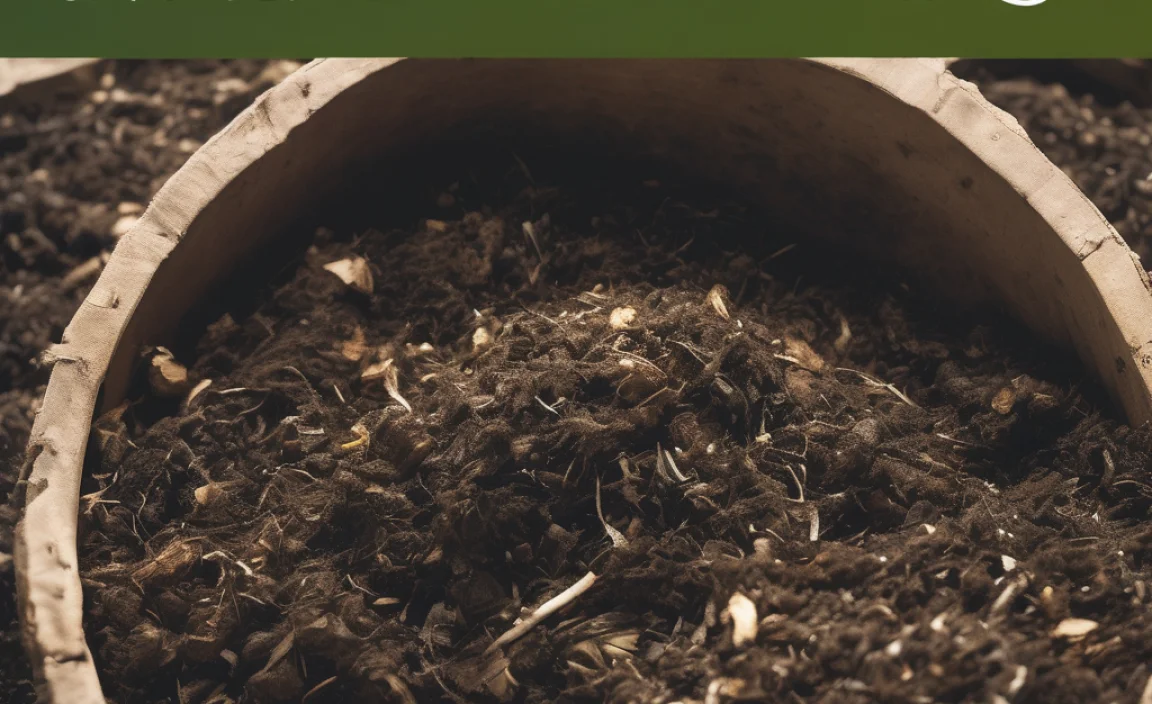Ever stared at two bags at the garden center and wondered, “What’s the real difference?” You’re not alone! Picking the right stuff for your plants can feel a bit like a guessing game. But don’t worry, I’m here to help you sort out compost versus potting mix. We’ll break it down so you can give your green pals the very best home. Ready to dig in?
Compost vs Potting Mix Comparison: Your Essential Guide by Troy D Harn
Hey everyone, Troy D Harn here from TopChooser! You know, when you’re getting ready to plant those beautiful flowers, start a veggie garden, or just repot some houseplants, the very first thing you grab is usually some kind of soil. But then you hit the garden store aisle, and BAM! You’re faced with a dizzying array of bags.
You’ve got “compost” here, “potting mix” there, “soil amendment,” “garden soil”… it can be a lot to take in, right? It’s like trying to pick out the perfect ingredient for a recipe – you need the right one to get the best results. That’s why understanding the difference between compost and potting mix is super important for any gardener, whether you’re a seasoned pro or just starting out.
When you use the wrong thing, your plants might not grow as well, or they could even struggle. But don’t sweat it! We’re going to go through this together, step-by-step. Think of me as your friendly neighbor who’s tackled this a time or two and wants to make it easy for you. By the end of this guide, you’ll know exactly when and why to use compost and when potting mix is your best bet. Let’s get those hands dirty and grow something amazing!
What Exactly is Compost?
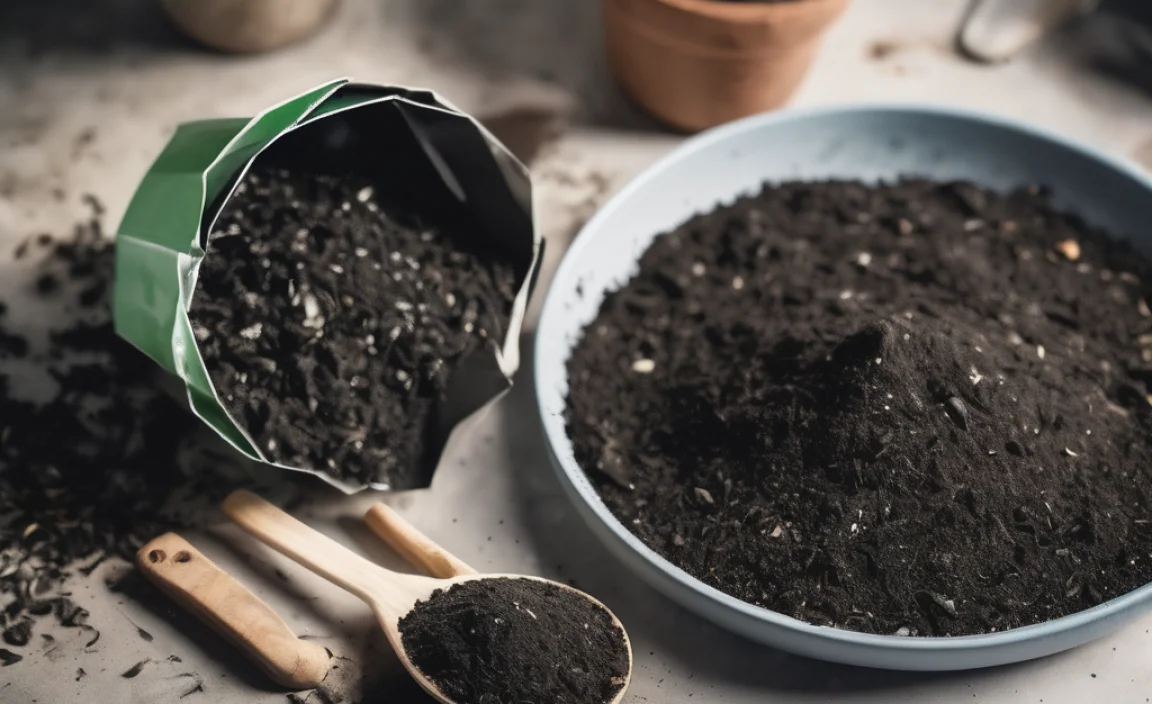
Let’s start with compost. Think of compost as nature’s way of recycling. It’s basically decomposed organic material. This includes things like kitchen scraps (fruit peels, veggie trimmings, coffee grounds – hold off on meat and dairy though!), yard waste (leaves, grass clippings, small twigs), and other natural bits. When these items are left to break down over time, often with the help of microbes, worms, and other decomposers, they turn into a dark, crumbly, nutrient-rich material. It smells earthy, like a forest floor after a rain, and it’s packed with goodness.
Making your own compost is a fantastic way to reduce waste and create a free, super-powered soil amendment. It improves soil structure, helps retain moisture, and slowly releases nutrients to your plants. It’s often described as adding “life” back into the soil. Since it’s made of natural, broken-down stuff, it’s generally quite forgiving, but it’s not usually meant to be used straight from the compost bin into a pot. We’ll get to why in a bit.
What is Potting Mix?
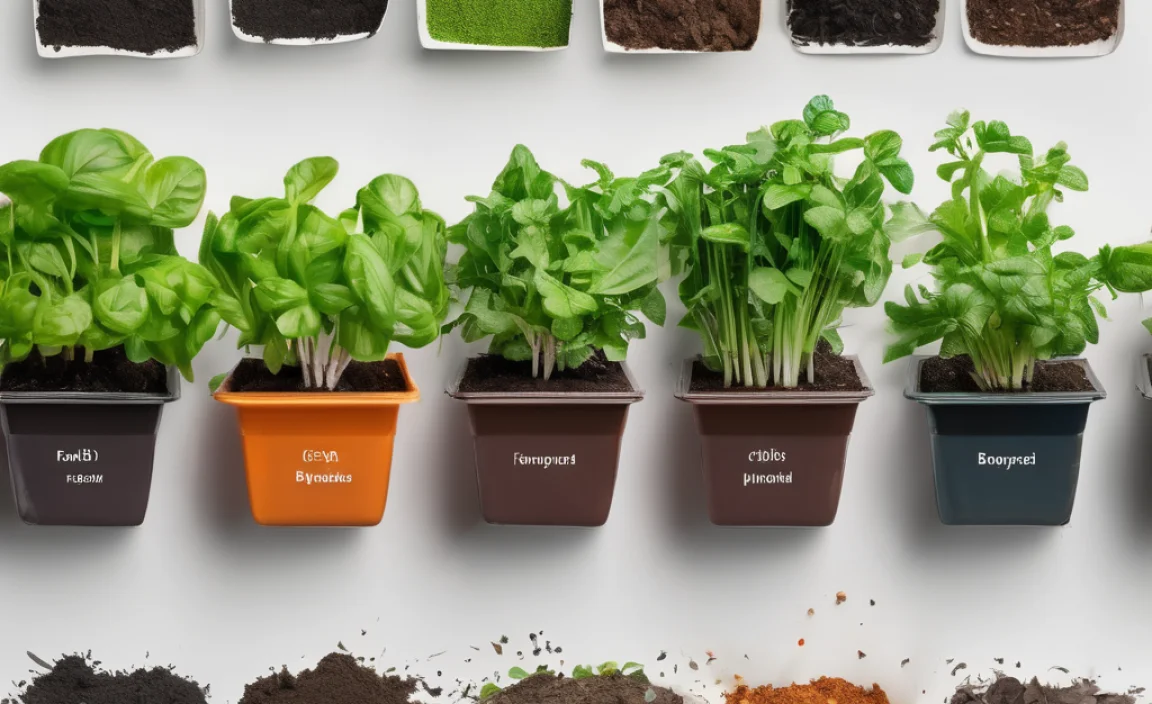
Now, let’s talk about potting mix. This is a bit different! Potting mix, also sometimes called potting soil or container mix, is specifically designed for growing plants in containers – think flower pots, hanging baskets, window boxes, and even raised beds that are enclosed.
Unlike compost, potting mix is usually a blend of several ingredients. You’ll often find peat moss or coco coir (which is made from coconut husks and is a great sustainable alternative to peat), perlite or vermiculite (these are lightweight, volcanic materials that help with drainage and aeration), and compost or aged bark fines. Sometimes, it also includes slow-release fertilizers to give your plants a boost right from the start.
The key thing about potting mix is that it’s engineered for containers. It’s lighter than garden soil, drains well (which is crucial because pots don’t have the same drainage as the ground), and it’s usually sterile, meaning it’s less likely to carry pests or diseases that could harm your plants in a confined space.
Compost vs Potting Mix: The Big Differences
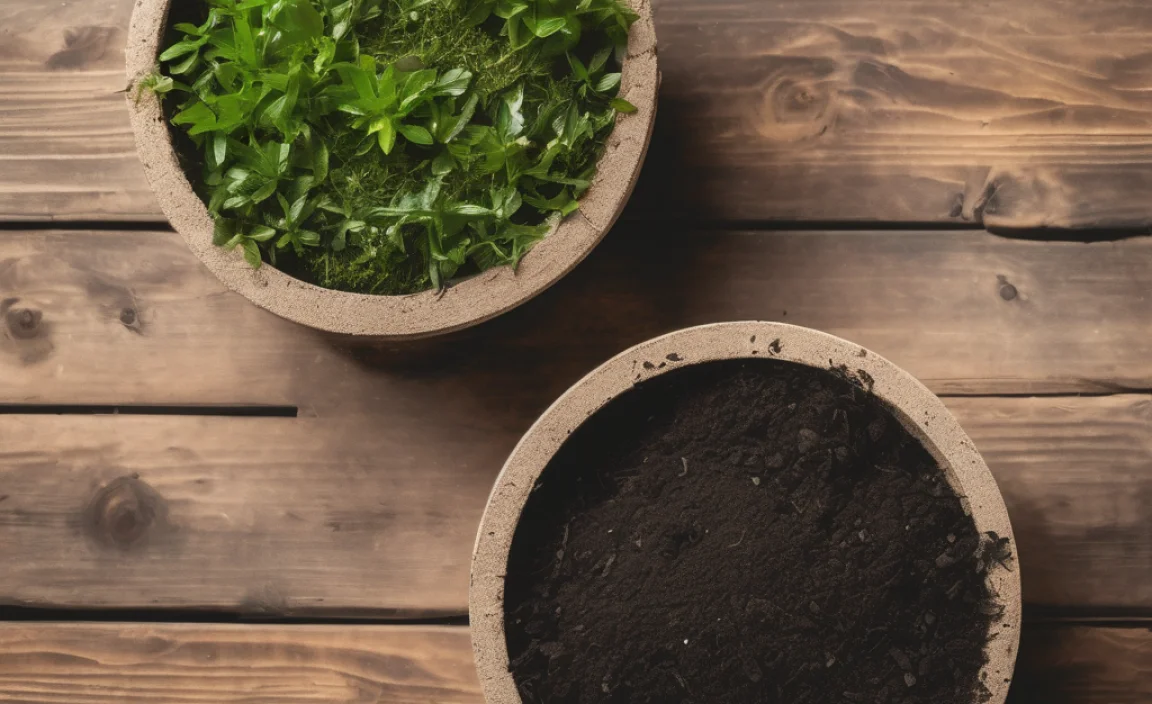
So, why can’t we just use compost everywhere? Or why is potting mix sometimes recommended over compost? It all comes down to what your plants need and where they’re growing.
Think of it like this: Compost is like a super-rich meal supplement. It’s packed with nutrients and beneficial microbes, which is amazing for building healthy soil in your garden beds. Potting mix, on the other hand, is like a complete, balanced meal specifically prepared for a sensitive eater in a controlled environment. It provides the right structure, moisture retention, and aeration that a plant needs specifically when it’s in a pot where drainage and airflow are critical.
Here’s a quick rundown of the core differences:
- Purpose: Compost is a soil amendment to improve existing soil. Potting mix is a standalone growing medium for containers.
- Composition: Compost is decomposed organic matter. Potting mix is a blend of ingredients like peat/coir, perlite/vermiculite, and often compost or bark.
- Nutrients: Compost is nutrient-rich. Potting mix usually has added fertilizers for controlled release over time.
- Texture/Structure: Compost can be dense. Potting mix is lightweight, fluffy, and designed for excellent drainage and aeration.
- Sterility: Compost can contain beneficial microbes but might also carry weed seeds or pathogens. Potting mix is typically sterilized to prevent issues in containers.
- Use Case: Compost is best for amending garden beds. Potting mix is essential for pots, planters, and containers.
When to Use Compost
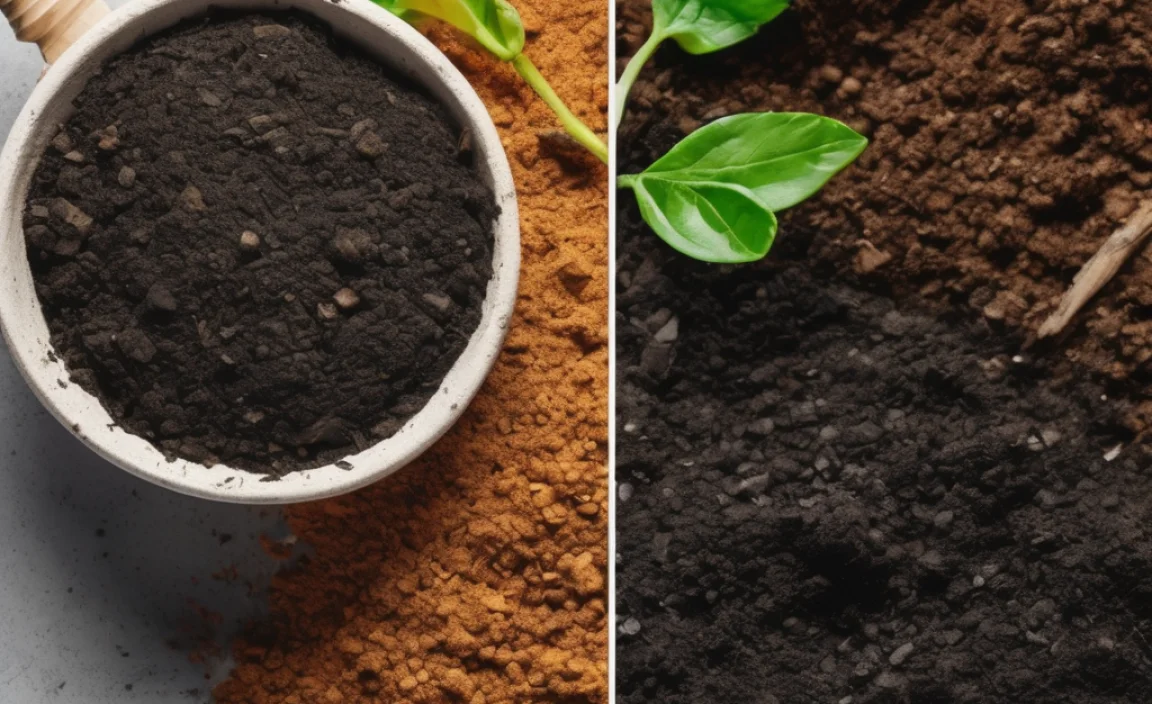
Compost is your best friend when you’re looking to improve the soil you already have, especially in your garden beds. It’s a fantastic soil amendment.
Benefits of Using Compost:
- Improves Soil Structure: It helps clay soils drain better and helps sandy soils retain moisture. Basically, it makes your soil the best version of itself.
- Adds Nutrients: Compost is packed with essential nutrients that plants need to grow strong and healthy. It feeds your soil, which in turn feeds your plants.
- Increases Water Retention: It acts like a sponge, holding onto water so your plants can access it when they need it, which means less frequent watering.
- Promotes Healthy Soil Biology: Compost teems with beneficial microorganisms that help plants absorb nutrients and fight off diseases.
- Reduces Waste: Making your own compost is a great way to divert food scraps and yard waste from landfills. The EPA has great resources on home composting.
- pH Buffering: Compost can help stabilize the pH of your soil, making it more hospitable for a wider range of plants.
How to Use Compost:
You generally don’t want to fill a whole pot with just compost. Here’s how to use it effectively:
- Amending Garden Beds: Spread a 2-4 inch layer of compost over your garden beds before planting. Then, work it into the top 6-8 inches of soil using a garden fork or tiller. This is perfect for vegetable gardens, flower beds, and around established trees and shrubs.
- Top Dressing: For established plants, you can spread a thin layer (about 1 inch) of compost around the base of the plant, keeping it a few inches away from the stem. Water it in. This provides a slow, steady release of nutrients.
- Compost Tea: You can make a liquid fertilizer by steeping compost in water. This is a great way to give plants a nutrient boost.
- Lawn Improvement: Top-dress your lawn with a thin layer of compost in the spring or fall to improve soil health and grass resilience.
When to Use Potting Mix
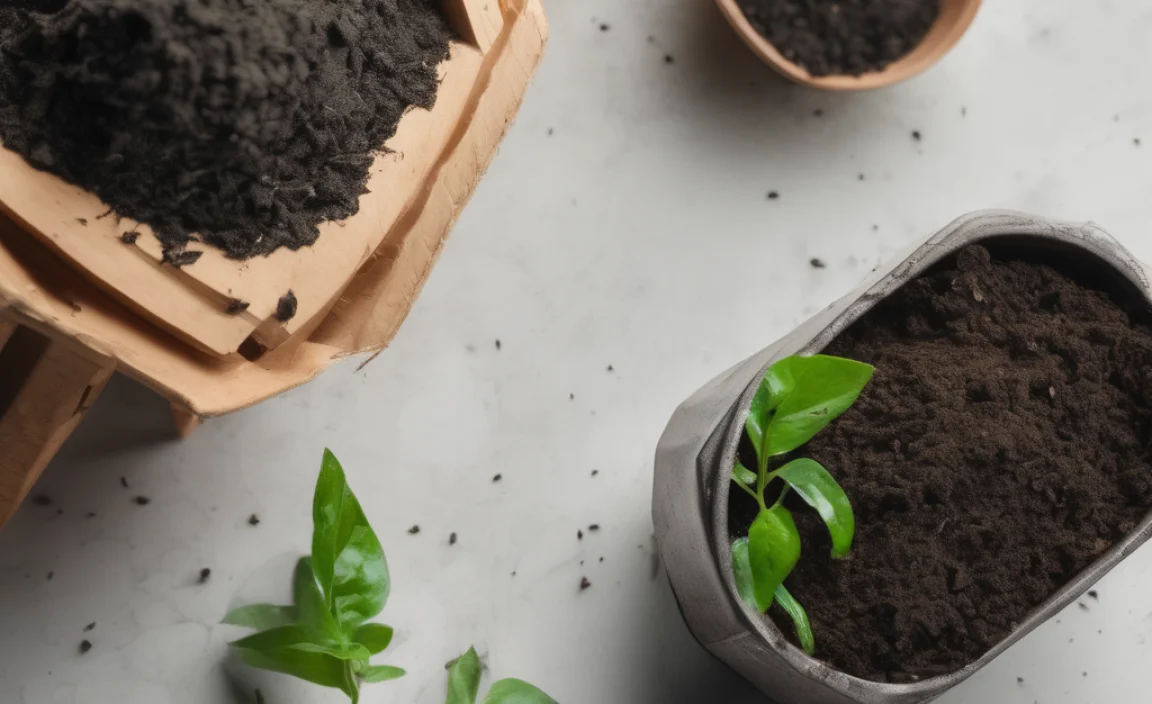
Potting mix is your go-to when you’re planting in anything that isn’t directly in the ground. If it has sides and a bottom, and doesn’t have natural earthworms aerating it, you probably want potting mix.
Benefits of Using Potting Mix:
- Excellent Drainage: This is probably the most critical benefit. Pots have limited space for air and water. Potting mix is formulated to let excess water drain away, preventing root rot.
- Proper Aeration: The lightweight ingredients allow air to reach the plant roots, which they need to “breathe” and thrive. Roots in compacted or waterlogged soil can suffocate.
- Controlled Environment: Most potting mixes are sterilized. This means you’re starting with a clean slate, free from common soil-borne diseases, pests, and weed seeds that could plague your container plants.
- Lightweight: Especially important for hanging baskets or containers you might need to move. It’s also easier to handle when filling pots.
- Balanced Nutrition (Often): Many potting mixes contain starter fertilizers that slowly release nutrients, giving your plants a good start without the risk of “burning” them like straight compost sometimes can.
- Consistent Quality: Bagged potting mixes are formulated to provide a reliable growing medium, which is crucial for predictable plant growth in containers.
How to Use Potting Mix:
- Container Planting: This is the primary use. Fill your pots, planters, window boxes, or hanging baskets with potting mix. Ensure there are drainage holes in your containers!
- Repotting Houseplants: When your houseplants outgrow their current pots, use fresh potting mix to repot them into larger containers.
- Starting Seeds: While you can start seeds in compost, seed-starting mixes (a type of potting mix) are often preferred because they are fine-textured and sterile, offering optimal conditions for delicate seedlings.
- Raised Beds (Sometimes): For shallow raised beds or those with structural liners, potting mix can be a good option, especially if you want to ensure excellent drainage. For deeper beds, a mix of compost and garden soil is often more economical.
What NOT to Do: Common Mistakes to Avoid
Understanding compost vs. potting mix is key to avoiding some common gardening pitfalls. Here’s what to steer clear of:
- Using Garden Soil in Pots: Never use regular garden soil straight from your yard in pots. It compacts easily, clogs drainage holes, and can become waterlogged, leading to root rot. It also often contains weed seeds and pathogens that are best avoided in a contained environment.
- Using Only Compost in Pots: While compost is amazing, filling pots with 100% compost can be too dense. It might not drain well enough, and the high nutrient content, especially if the compost isn’t fully mature, can sometimes “burn” delicate plant roots.
- Using Potting Mix in Garden Beds: Potting mix is expensive! While it will work, it’s not the most economical or efficient way to amend large garden areas. Garden soil is designed to improve existing soil, and potting mix is designed as a standalone medium.
- Reusing Old Potting Mix Without Refreshing: Potting mix gets depleted and compacted over time. While you can often refresh old potting mix by adding fresh compost and some slow-release fertilizer, don’t just reuse it as is for new plants.
Can You Mix Them?
Absolutely! In fact, mixing compost and potting mix can be a fantastic strategy for container gardening. It allows you to leverage the benefits of both.
Why Mix Them?
- Boosts Nutrients in Potting Mix: Adding some compost to your potting mix can give it an extra nutrient boost naturally, reducing your reliance on synthetic fertilizers.
- Improves Moisture Retention in the Mix: Compost can help your potting mix hold onto a bit more moisture, which is great for thirsty plants.
- Enhances Drainage/Aeration in Compost: Blending compost with lighter potting mix ingredients helps prevent it from becoming too dense when used in a container setting.
How to Mix Them:
A good starting point for most container plants is a ratio of about 75% potting mix to 25% compost. For very hungry plants or if you’re using your own less-than-super-charged compost, you might increase the compost slightly. Always make sure your compost is well-finished and you’re still using a good quality potting mix as the base.
DIY Potting Mix vs. Bagged Potting Mix
For serious container gardeners or those looking to save money, making your own potting mix can be a rewarding project. It gives you complete control over the ingredients.
Typical DIY Potting Mix Recipe (for about 1 cubic foot):
- 4 quarts peat moss or coco coir
- 4 quarts compost (well-finished)
- 2 quarts perlite or vermiculite
- Optional: 1/4 cup of a balanced, slow-release organic fertilizer
How to make it: Simply mix all the ingredients together thoroughly in a large tub or on a tarp. Store in a cool, dry place.
What to know:
- Coco Coir: A sustainable alternative to peat moss. It needs to be rehydrated if bought compressed.
- Peat Moss: Holds moisture well but can be difficult to rewet once completely dry. It’s also a non-renewable resource.
- Perlite: Tiny white balls that provide excellent aeration and drainage.
- Vermiculite: A fluffy, lighter material that also helps with aeration and retains moisture better than perlite.
Bagged potting mixes are convenient and generally reliable, but making your own can be more cost-effective if you have a lot of containers or do a lot of planting. For more in-depth information on creating your own soil blends, you might find resources from university extension offices helpful, like those from Michigan State University Horticulture.
Compost vs Potting Mix: A Quick Comparison Table
To help you remember the key points, here’s a handy table:
| Feature | Compost | Potting Mix |
|---|---|---|
| Primary Function | Soil Amendment; Boosts soil health and fertility. | Growing Medium; Standalone soil for containers. |
| Composition | Decomposed organic matter (food scraps, yard waste). | Blend: Peat/Coir, Perlite/Vermiculite, Compost/Bark. Often includes fertilizers. |
| Drainage | Improves drainage in clay soil; can be dense on its own. | Formulated for excellent drainage in containers. |
| Aeration | Can be poor if compacted; improves with mixing. | Lightweight and airy for root respiration. |
| Nutrient Content | Rich in organic nutrients, variable. | Balanced, often with added slow-release fertilizers. |
| pH | Generally neutral to slightly acidic, buffers pH. | Typically neutral. |
| Sterility | May contain microbes, fungi, sometimes weed seeds or pathogens. | Usually sterilized to prevent pests and diseases. |
| Best Use | Garden beds, lawns, improving soil. | Pots, containers, hanging baskets, seed starting. |
| Cost | Potentially free if homemade; lower cost for purchased amendments. | Higher cost per volume due to specialized ingredients and processing. |
Frequently Asked Questions (FAQs)
Q1: Can I use compost in my houseplants?
Yes, you can! But it’s best not to use 100% compost. Mix a bit of good quality, well-finished compost (about 20-30%) with a good quality potting mix. This adds nutrients and improves the soil structure without making it too dense or overly rich for the plant’s container environment. Always ensure the compost is fully decomposed.
Q2: What happens if I use garden soil in a pot?
Using garden soil in pots is a big no-no. Garden soil compacts very tightly when watered in a container. This restricts airflow to the roots and prevents excess water from draining. The result is often root rot, suffocated plants, and stunted growth because the roots can’t get air or water properly.
Q3: Is “garden soil” the same as compost?
No, they are quite different. Garden soil is the dirt from your yard, which is heavier and can be compacted. Compost is decomposed organic matter that acts as a soil amendment to improve existing garden soil. While compost can be part of a good garden soil, garden soil itself is not compost.

I am passionate about home engineering. I specialize in designing, installing, and maintaining heating, ventilation, and air conditioning systems. My goal is to help people stay comfortable in their homes all year long.


